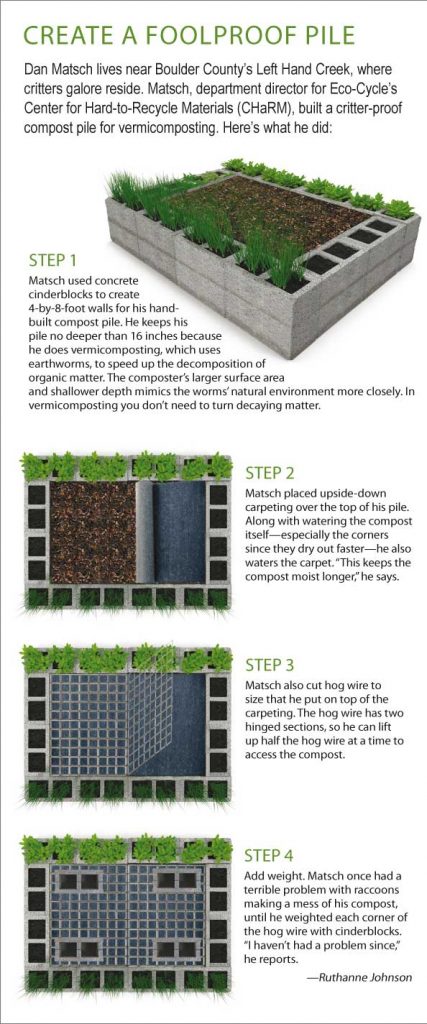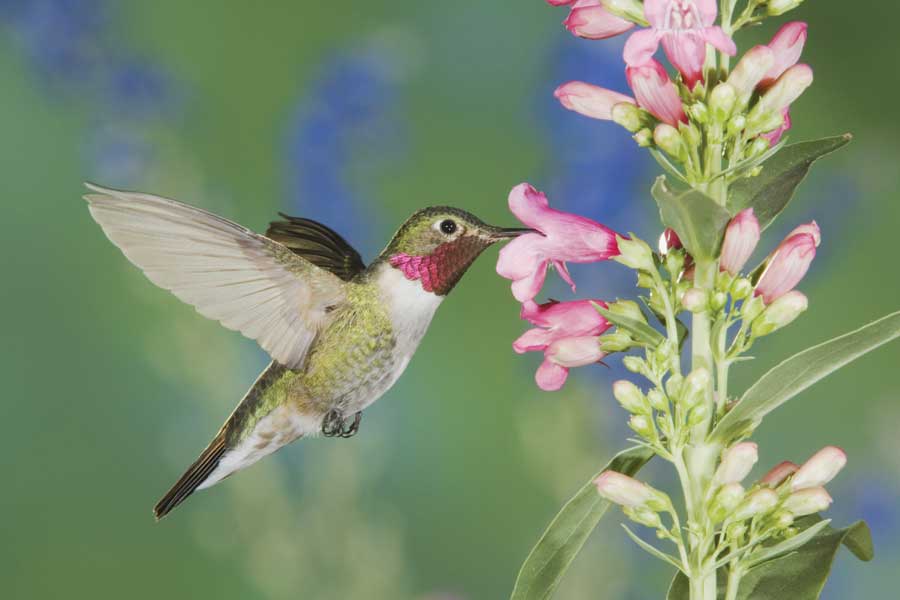Critter-Free Compost
08 Mar 2018
How to keep animals out of your compost pile.
By Ruthanne Johnson You’re doing a good thing, throwing food scraps and other biodegradables into a compost pile to use later in your garden. Doing so allows you to enhance your landscape naturally and keep unnecessary trash out of landfills. But one day, you see a hole in the bin’s side and obvious nibbles on the veggies you threw out yesterday. Mice, you think. Or worse, rats! Odeur de rotting food is irresistible to animals looking for an easy meal, especially if you live near a wildlife corridor or riparian area. Raccoons, mice, rats, ants and even foxes can become an issue when it comes to compost, says Kristin Cannon, Boulder’s district wildlife manager for Colorado Parks and Wildlife. “Rats can set up shop and become difficult to control, also causing damage and potentially spreading disease. Foxes can become habituated, and raccoons can make a mess.” Other animals can be downright dangerous. “Most of Boulder County has the potential for bears to get into compost, especially anywhere west of 95th,” Cannon says. “Bears can become habituated and cause property damage, returning frequently for food.” And a bear that habituates to humans is a dead bear. The good news is you don’t have to call it quits or dole out money to a pest-control company, most of which typically kill marauding animals. Boulder County composting experts offer these easy tips for keeping undesirables out of compost piles.Stir the Pot
Good maintenance is central to keeping critters out of your compost bin, says master composter Melanie Nehls Burow, who has taught free composting classes for Boulder County for the past 17 years. “That means stirring your pile with a pitchfork once a week and making sure the pile stays as damp as a wrung-out sponge.” Stirring discourages animals like ants, mice and rats from nesting in a compost pile because they typically prefer dry, undisturbed places. Moisture allows beneficial critters to thrive, which speeds the decay process. “Worms need water to breathe through their skin,” Nehls Burow says, “and crucial microorganisms move around from water droplet to water droplet.” Decomposition takes much longer in dry piles, meaning food is an attractant for longer.Don’t Dump and Run
One of the worst things for speedy breakdown is to just dump food scraps on top of the compost pile. “Compost is most active in the center of the pile,” Nehls Burow explains, so it’s better to dig an opening into the middle layer where new vegetable matter breaks down faster. Add the scraps and then cover the food with a brown layer, like dried leaves and small sticks. “You’ll want a lot of layers to mask the smells coming from newly added scraps.”Build It Well
Homemade compost piles are great for easy turning and composting large amounts. But use impenetrable building materials, like hard wood, stone or concrete, and make sure there are no gaps between the corners and walls. To keep critters from burrowing in from underneath, place wire mesh at the bottom of the pile with openings no larger than a half inch to admit beneficial creatures and block larger animals. Cover the compost pile with a lid to prevent access from above.Closed-System Composters
Closed-system composters include commercially made plastic bins and tumblers sold in stores. “Plastic compost bins are typically defensible against critters who can get into things like old pallets or railroad ties,” Nehls Burow says. Look for bins that sit low and have widemouthed openings for easier turning. They should have lockable, tight-fitting lids and aeration holes, and provide some sort of access to the amended soil, like a side door. Freestanding tumbler bins typically need more maintenance and may become too heavy to turn when not harvested often enough. One of Nehls Burow’s favorite composters is the Soilsaver, which Boulder County sells at cost to encourage folks to compost. “It’s got a locking bin that bolts down and is great in high winds,” she says. For info, visit www.bouldercounty.org/environment/composting/compost-bins.Change It Up
When critters are winning the compost battle no matter what you do, take a break from composting outdoors. Closed-composting systems can be placed inside a garage or a side building. “The animals will be forced to move on to another food source and then you can put it back outside again,” Nehls Burow says. If you have an outdoor pile, see “Create A Foolproof Pile” below for tips on keeping it secure from animals.Banish Bears
Folks who live where bears are a concern should use bear-resistant containers and curbside composting. They can also modify a bear-resistant container for composting by drilling holes in the bottom for air flow, Cannon says. People composting out in the county can use an electric fence to protect their compost piles. Bear Smart has info on electric fencing and other deterrents at www.bearsmart.com.












